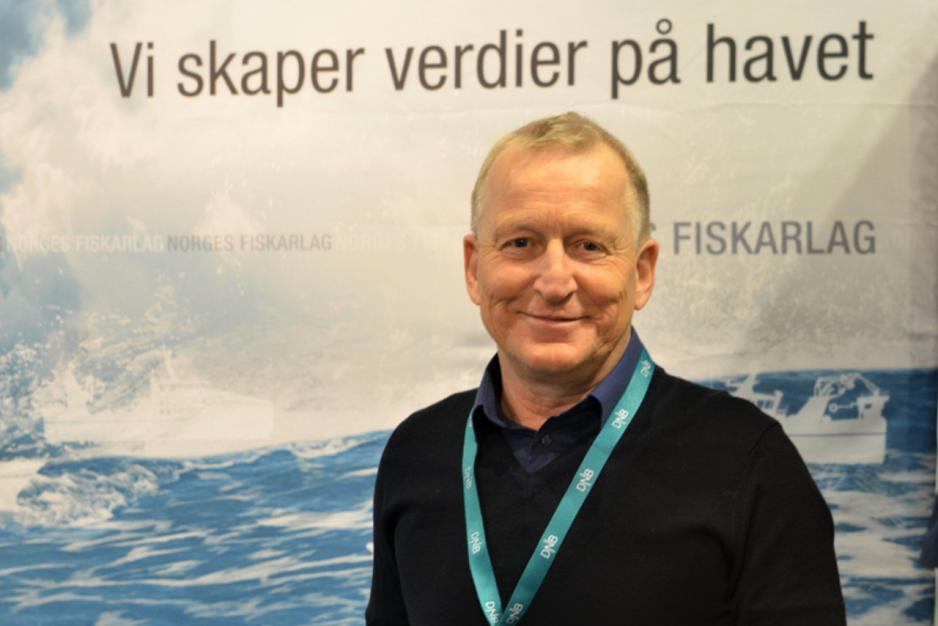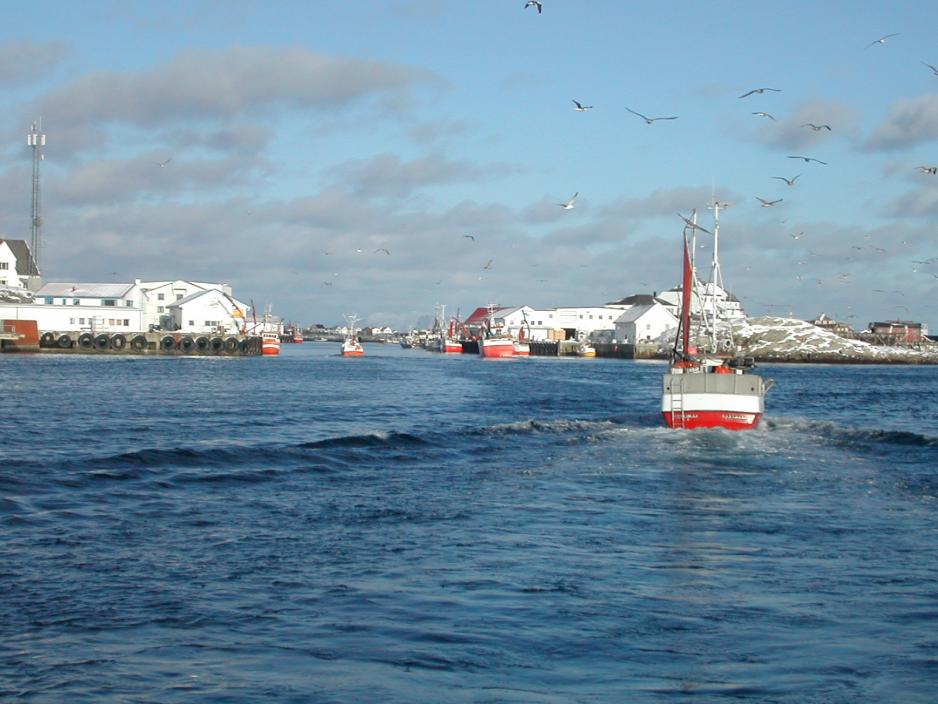Tough Times Ahead for Fishers and the Fisheries Industry as Quotas on Important Stocks are Set to Decrease

Many fishermen who derive their main income from cod and king crab will probably experience a real decline in income," says Kåre Heggebø, leader of the Norwegian Fishermen's Association. (Photo: Norges Fiskarlag).
Next year, the cod quotas will be significantly reduced, and a major reduction is also expected in the red king crab quota. The Norwegian Fishermen's Association is worried for both the cod stock and the fishers, who are facing more challenging years.
Next year, the fish quotas for several important stocks will be reduced. The cod quota was, as known, cut by 20 percent, and the Norwegian Institute of Marine Research recommends a significant reduction in the red king crab quota for 2024.
"It will be noticeable," says the leader of the Norwegian Fishermen's Association to High North News.
"We have had a reduction in the cod quota over the course of several years but have, until now, been able to compensate for this with the price," he continues.
High cod prices in recent years
The cod price has increased significantly in the past decade. The fishermen received almost NOK 50 per kilo several places during this year's winter fisheries.
Heggebø believes it is unlikely that another reduction in quotas can be compensated with the price.
"Many fishers who have their main income from the cod and red king crab fisheries will likely have a real decline in income," he elaborates.
Lower cod quotas
In the past ten years, the cod quota has decreased significantly after a record-high 1 million tonnes in 2013. In 2021, the quota was 885 600 tonnes, which has been regularly down-sized since.
For 2024, it will be nearly halved to 453 427 tonnes. This entails a decline of 20 percent from this year's quota.
Norway, Russia, and third countries share the total quota for the Northeast Arctic cod. Norway's share of the quota will be 212 124 tonnes.
Furthermore, this year's Norwegian Institute of Marine Research's red king crab research uncovered a massive decline in this stock. The quota advice for 2023 was 2375 tonnes. The marine scientists believe this quota should not exceed 966 tonnes in 2024.
f a long-term fishery is to be upheld, the quota for the coming years will continue to be low and must be under 1700 tonnes per year, according to the institute.
Consequences for the fisheries industry
"It will undoubtedly be challenging," says Chair of Norfra, Steinar Eliassen.
The company is one of the largest Northern Norwegian-owned fisheries groups within the white fish sector and operates fish production in Vestvågøy, Karlsøy, and Nordkapp in the counties Nordland and Troms and Finnmark.
Chairman and principal owner Steinar Eliassen in the fisheries group Norfra. (Photo: Hilde Bye).
Eliassen believes it will be especially challenging for the fish plants and the producers in the coming time.
"For Norfra, the red king crab is not that significant regarding activity, even though it is expensive in dollars and cents. It is the reduction in cod that will be the most challenging. We compete for raw materials, and there are limits to how far you can go and how much you can pay – before you cannot get it back in the market," he continues and adds:
"We will try to cope as best as possible, but we risk poorer results than in many years. The reduction will likely also lead to redundancies in the fisheries industry."
He further points out the fisheries industry's ripple effects in local communities and worries about the consequences that the quota reduction may have for the Northern Norwegian region.
"We register how this is met by the ocean-going fleet, which does not want to give up any quotas and concurrently keeps exporting unprocessed, frozen raw materials."

Chairman Steinar Eliassen in Norfra is worried about the consequences the reduction of fishing quotas will have on the fisheries industry in Northern Norway. (Photo: the Norwegian Society for Sea Rescue)
"The fisheries industry on land has had several difficult years in the past two decades. Next year is reminiscent of 1999-2008 when the quotas were historically low. However, frozen fish was not exported in such a large proportion as it is now. Hence, the industry had access to more raw materials," explains Eliassen in Norfra.
He also believes it will be tough for the fishers.
"Next year will be the first year since 2003, I believe, that the fisheries will not go up and forward."
"The fishers have made it out relatively okay from these ups and downs regarding quotas since the raw materials prices often compensate for smaller quotas and vice versa. But next year, it does not look that easy," he adds.
Worries about the cod stock
What is most worrying regarding the quota reduction for cod?
"It is worrying that there has been poor recruitment despite such a big stock," says Heggebø of the Norwegian Fishermen's Association.
He explains that recruitment means there have not been registered strong, new year classes of cod in the past years; the fish has not reached an age where it is measured and counted as part of the stock estimates.
"This is very worrying."
"In addition, many of our members will have tough times ahead. Luckily, we have many good years behind us, and I hope this can contribute to being more prepared for some tougher years," he adds.
Many young people have recently stepped into the fisheries sector and invested a lot in boats and quotas – what do you think about that situation?
"That can be very challenging, especially for those who have big commitments. Several things are happening at once now: reduced quotas, lower income, higher interest rates, and generally higher operations costs regarding fuel and prices that have gone up the past years," explains the association leader.
Several things are happening at once now: reduced quotas, lower income, higher interest rates, and generally higher operations costs.
King crab is not a primary fishery
"Regarding the king crab, the quota reduction adds to a number of other negative developments in several stocks," Heggebø further explains.
"With the king crab, the idea has been that it would not be a primary fishery but an addition. Those who have leaned too heavily on the king crab will likely have bigger issues than those who have considered it an added benefit to their other operations."
The fishers may participate in the red king crab fisheries if certain requirements are met. There are further divides between quota-regulated areas, mainly Eastern Finnmark, and outside the quota-regulated areas, which are roughly west of Nordkapp. (See the fact box at the end of the article).
Unclear why the stock is shrinking
How has it come to this reduction of cod quotas?
"That is the million-dollar question," answers Heggebø of the Norwegian Fishermen's Association and continues:
"Especially since we have followed the advice from researchers and management on cod and king crab."
Eliassen also finds it difficult to provide a specific answer to why the cod stock is declining but highlights two factors that may have affected the situation:
"One is the seismic shooting that the oil industry has been doing, which one knows is damaging to fish larvae if they are exposed to it."
"In addition, trawling has been happening in coastal areas in the past years, in areas where major concentrations of Calanus finmarchicus [a species of copepod, an important food source for young fish, journ. note.]. Although there is not a great mixing of the fish larvae, the larvae with the biggest chance of surviving are found here. And those who find themselves in the middle of the copepod stream will be caught by the copepod trawlers," concludes Eliassen.
The Red King Crab Fisheries
- King crab is caught with traps, mainly in Eastern Finnmark's fjords and coastal waters.
- Russian researchers placed the king crab in Kola Bay in the '60s, and the species has since spread both east and west,
- East of Nordkapp, the fisheries are quota regulated. In this area, the aim is to maintain a long-term commercial fishery through quota regulation. The minimum measurement is 130 mm for both genders.
- There is free fishery and no minimum measurements outside the quota-regulated areas. In the areas west of Nordkapp, however, there is a free fishery of king crab to reduce the spread and keep crab density as low as possible.
- Nearly 1000 vessels participate in the quota-regulated fishery.
Source: The Norwegian Institute of Marine Research.


